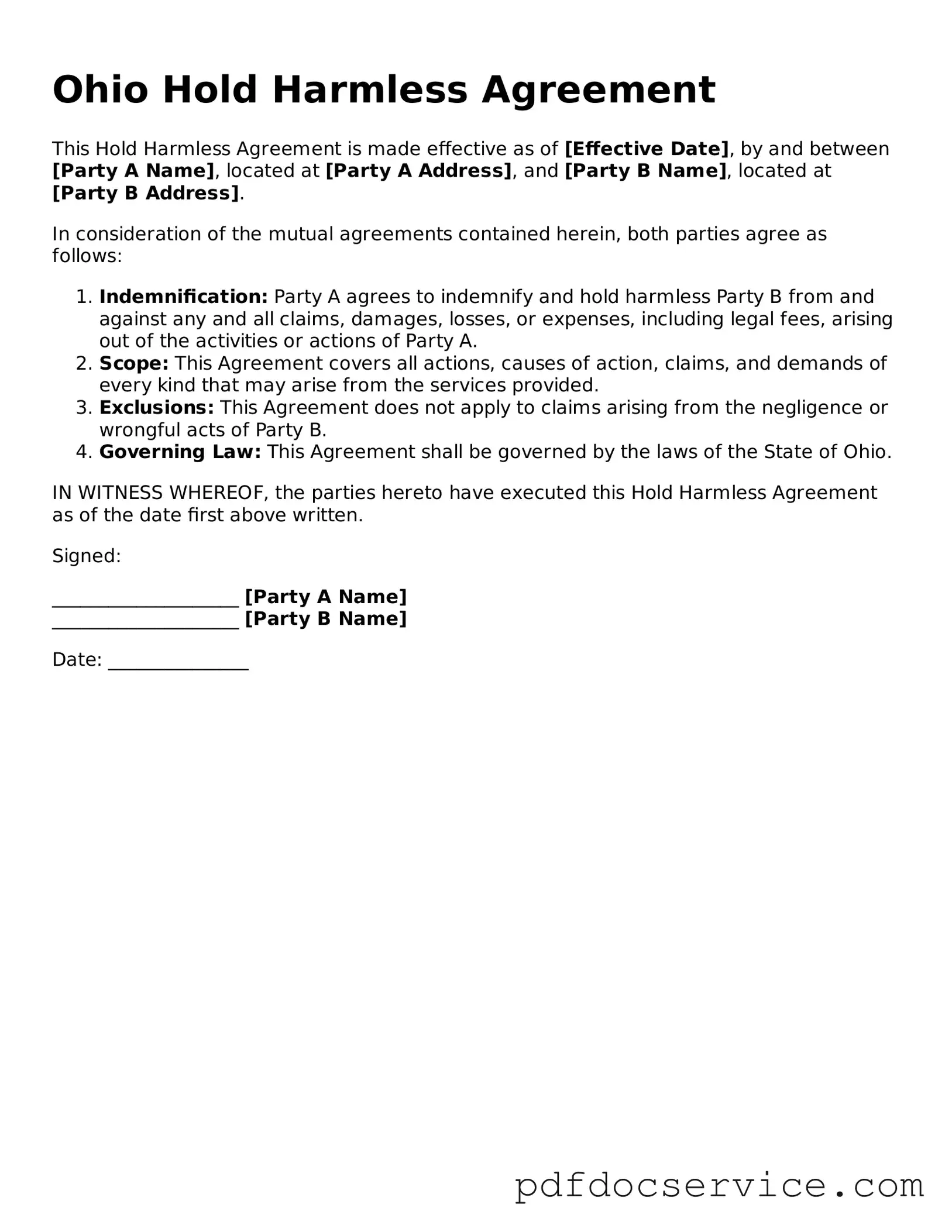What is a Hold Harmless Agreement in Ohio?
A Hold Harmless Agreement is a legal document that protects one party from liability for any injuries or damages that may occur during a specific activity or event. In Ohio, this type of agreement is often used in various situations, such as in rental agreements, construction contracts, and event planning. By signing this agreement, one party agrees not to hold the other party responsible for certain risks associated with the activity.
Why would someone use a Hold Harmless Agreement?
Individuals and businesses use Hold Harmless Agreements to mitigate risk. When engaging in activities that could potentially lead to accidents or injuries, such as hosting an event or allowing someone to use property, these agreements provide a layer of protection. They clarify responsibilities and can help prevent costly legal disputes by ensuring that all parties understand their liabilities.
Who should sign a Hold Harmless Agreement?
Typically, both parties involved in the activity should sign the agreement. This can include property owners, event organizers, contractors, and participants. It is essential for all parties to understand the terms outlined in the agreement before signing. This ensures that everyone is aware of their rights and obligations, fostering a transparent relationship.
Are there any limitations to a Hold Harmless Agreement?
Yes, there are limitations. While these agreements can provide significant protection, they cannot absolve a party from liability in all situations. For example, if gross negligence or intentional misconduct occurs, a Hold Harmless Agreement may not be enforceable. Additionally, Ohio law may impose certain restrictions on how these agreements can be structured, particularly in cases involving public safety.
How do you create a Hold Harmless Agreement in Ohio?
Creating a Hold Harmless Agreement involves several steps:
-
Identify the parties involved and their roles.
-
Clearly outline the activity or event covered by the agreement.
-
Specify the liabilities that are being waived.
-
Include any necessary legal language to ensure enforceability.
-
Have both parties review and sign the document.
It is often advisable to consult with a legal professional to ensure that the agreement meets all legal requirements and adequately protects your interests.
Is a Hold Harmless Agreement enforceable in Ohio?
Generally, Hold Harmless Agreements are enforceable in Ohio, provided they are drafted correctly and comply with state laws. Courts typically uphold these agreements if they are clear, specific, and mutually agreed upon. However, the enforceability can depend on the context and the specific terms outlined in the agreement. Always consider seeking legal advice to ensure your agreement is valid and enforceable.
